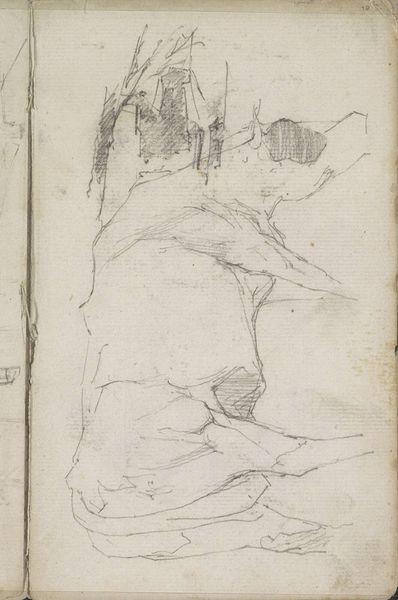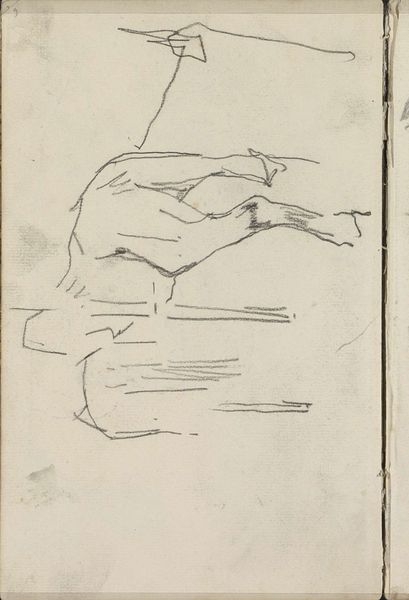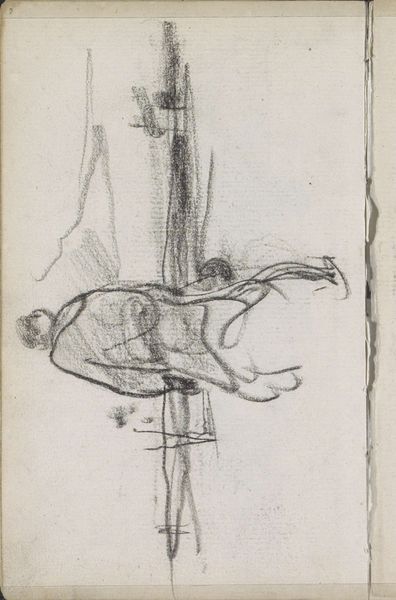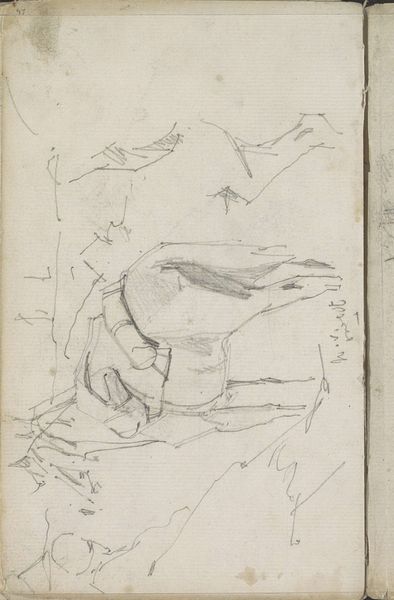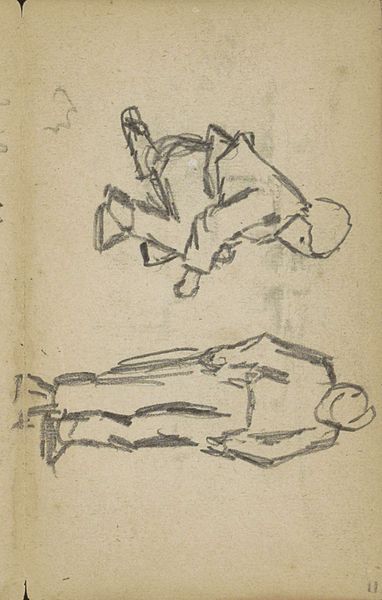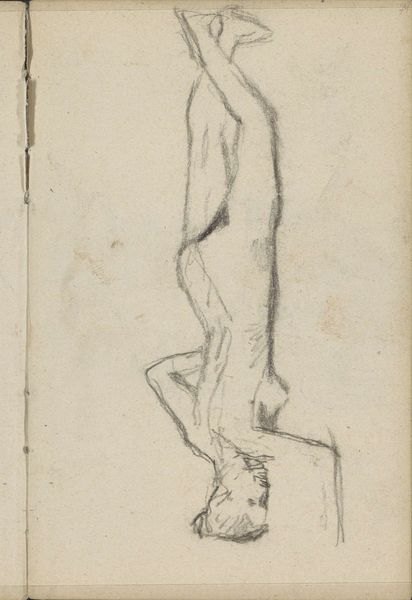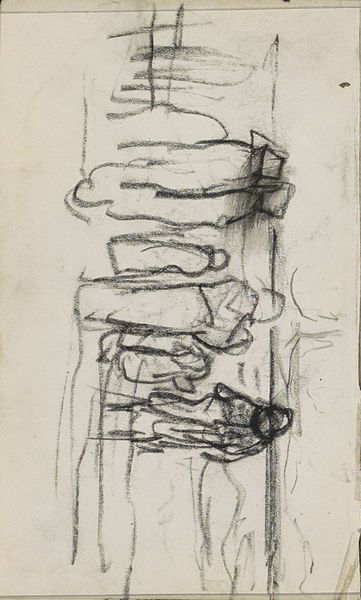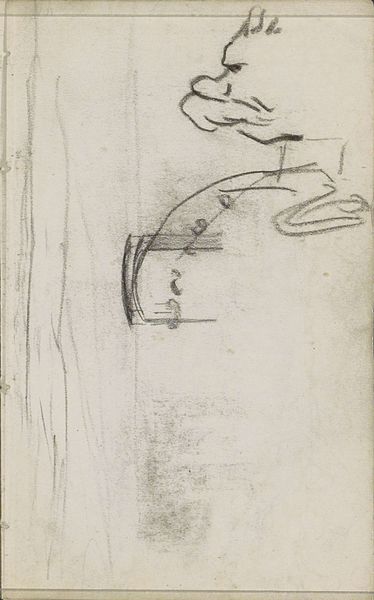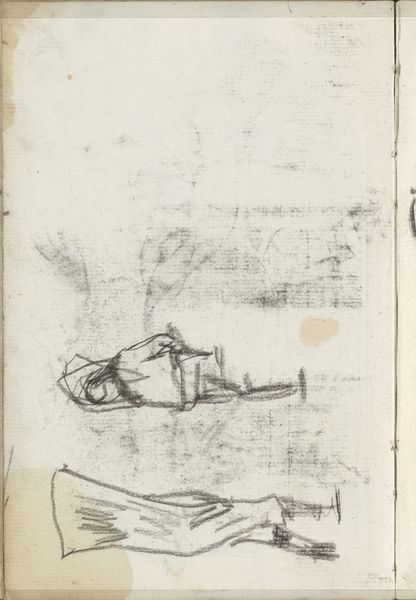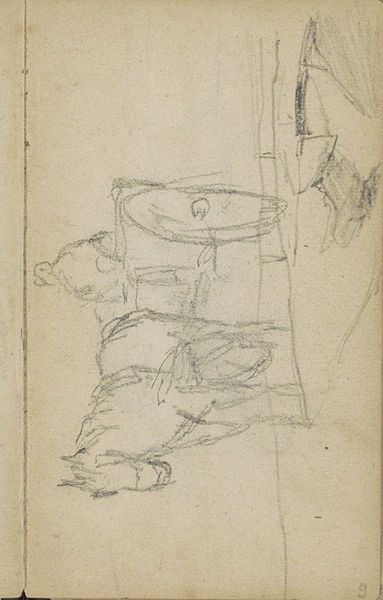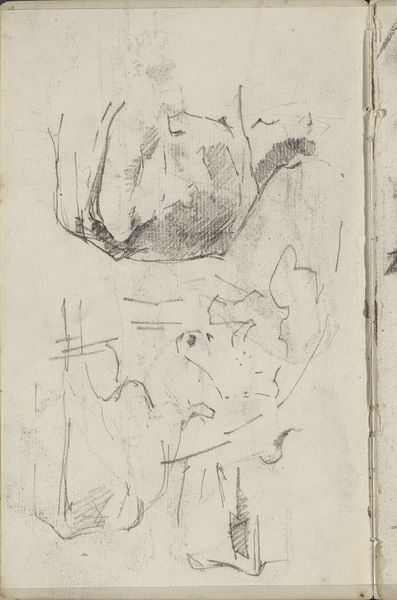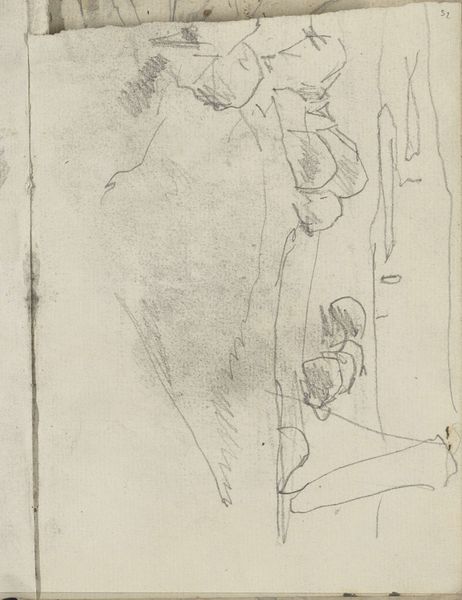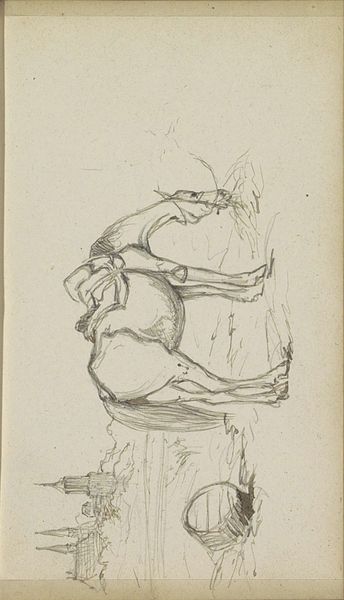
Copyright: Rijks Museum: Open Domain
Editor: Here we have Anton Mauve’s “Man in a Landscape,” a pencil drawing from between 1848 and 1888, housed at the Rijksmuseum. It feels…unfinished. Like a quick sketch from a larger sketchbook. What do you see in it? Curator: Well, first, let's consider the period. Mauve lived through a time of immense social change. Rapid industrialization, urbanization, the rise of socialist ideas… Looking at this sketch, one has to ask: What is its relationship to those social forces? Is this figure at rest, perhaps resisting the demands of modern labor? Editor: I didn't think of it that way, I just thought the man was maybe sleeping! But what does his “rest” mean in the context of a changing society? Curator: Precisely. This sketch participates in the 19th century romanticization of the working class; portraying their life as 'restful'. Landscape becomes an active player here, almost a place of escape. However, it's important to remember Mauve's position within a rising art market. How was he representing the working class in relation to a bourgeoise audience? Was this sketch intended to provoke empathy, or confirm existing class hierarchies? Editor: So, even this simple sketch has connections to much larger societal debates playing out at the time! Curator: Exactly. Every artwork is a product of its context and can, therefore, give us insights into the power dynamics of the moment it was produced. What seems like a simple drawing is steeped in layers of social meaning. Editor: Wow, I'll never look at a landscape sketch the same way again. It’s really powerful to see how art reflects and shapes social and political ideas. Curator: Indeed. It's a constant reminder that art doesn't exist in a vacuum. We have to actively consider these forces when interpreting visual materials.
Comments
No comments
Be the first to comment and join the conversation on the ultimate creative platform.
